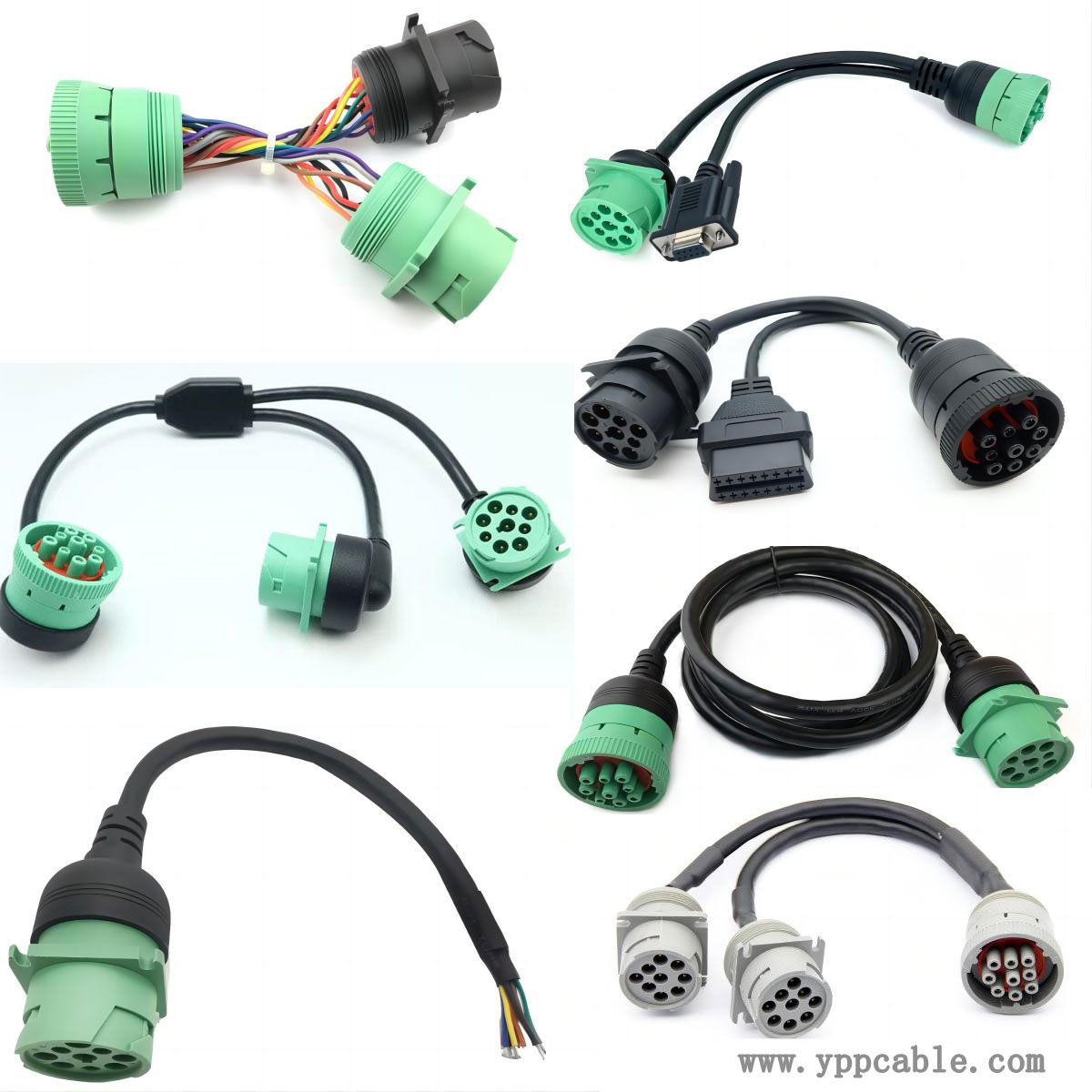What is the data transmission performance of right angle J1939 cable
The data transmission performance of the right angle J1939 cable is excellent, manifested in high reliability, efficient real-time communication, and strong anti-interference ability, which can meet the stringent requirements of heavy vehicles and industrial equipment in complex electromagnetic environments. The following analysis is conducted from six aspects: physical layer characteristics, data transmission mechanism, transmission rate and bandwidth, error detection and correction mechanism, network management function, application scenarios and advantages:

Physical layer characteristics: The J1939 protocol is based on CAN (Controller Area Network) technology, and the physical layer usually uses shielded twisted pair cables. This design can effectively reduce electromagnetic interference (EMI) and ensure the stability of data transmission. Cables with right angle design are more flexible during installation, able to adapt to compact spatial layouts while maintaining signal integrity.
Data transmission mechanism: The J1939 protocol supports both point-to-point and broadcast communication methods.
Transmission rate and bandwidth: The J1939 protocol supports a transmission rate range of 125 kbit/s to 500 kbit/s, depending on the design of the physical layer.
Error detection and correction mechanism: The J1939 protocol has multiple built-in error detection and correction mechanisms, including frame check sequence (FCS), typically implemented by cyclic redundancy check (CRC). The data link layer also uses acknowledgement frames (ACKs) and acknowledgement frames (ACK delimiters) to provide transmission confirmations. If errors are detected during transmission, the data link layer will implement error handling mechanisms, such as resending data packets, to ensure the correctness of the data.
Network management function: The J1939 protocol supports network management functions, including node joining and leaving events, network reset, and other operations. These functions ensure the reliability and stability of the network, especially in scenarios where nodes are dynamically changing, such as the initialization and configuration of each control unit during vehicle start-up.
Application scenarios and advantages: J1939 protocol is widely used in commercial vehicles, ships, agricultural and forestry machinery and other fields, and its right angle designed cables perform well in these scenarios
Contact: Kevin Yu
Phone:
E-mail: yppcable@126.com
Whatsapp:
Add: FL2,Bld 6, Hongte Industrial Park, Yongtou , Changan, Dongguan, Guangdong